While much of the attention is on the lava flows and burning homes in lower Puna, there have been dramatic events at the summit of Kīlauea. The pit crater of Halemaʻumʻau that has been the subject of untold thousands of tourist photos has become almost unrecognizable.
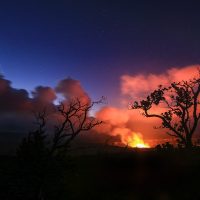
Halemaʻumʻau was once a major stop on the Hilo tour circuit. Tour buses disgorging loads of visitors to gawk at the heart of the volcano. A large parking area and viewpoint could be found on the southern rim of the crater. At the overlook one could peer down at the crater floor hundreds of feet below and watch the steam vents.
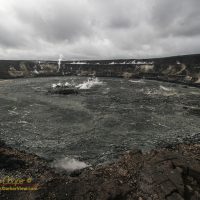
It is this Halemaʻumʻau that I first knew, on family visits to the islands in the 1990’s, when hiking the caldera with visiting friends. I remember approaching from across the caldera floor, on the trail from Waldron Ledge and Kīlauea Iki. You would arrive at the rim and look down into the pit of Halemaʻumʻau, a yawning crater that so perfectly exemplified the volcano.
Halemaʻumʻau has not always appeared thus. At times it has been a churning lake of lava, at others a seemingly bottomless yawning pit. The only constant here is the pit itself, otherwise it is always changing.
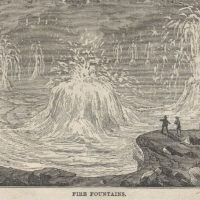
Years ago I yearned to see such a sight, to see churning lava replace that flat crater floor. In my mere ten years on-island, a blink in the history of this place, I have seen that and much more.
The spectacle presented was worth coming double the distance to see. Under us, and stretching away before us, was a heaving sea of molten fire of seemingly limitless extent. The glare from it was so blinding that it was some time before we could bear to look upon it steadily. – Samuel Clemens (Mark Twain) in his 1872 book Roughing It.
The changes began when the Overlook Vent opened in 2008. Heralded by an explosion of steam, ash, and flying rock, a large pit opened just underneath the tourist viewpoint. Fortunately this occurred at night, before the tour buses arrived for the day.

Describing this new feature was often confusing to some. It was a vent, within a pit crater, within a caldera.
Before long a lava lake appeared in the new Overlook Vent. A nearly constant column of steam and gas rose above, brightly lit orange at night by the lava below in the pit.

The lava lake remained out of view, at least for those who followed the rules and used the Jaggar viewpoint. It was not until 2015 that the lava lake first rose high enough to be seen from the viewpoint.
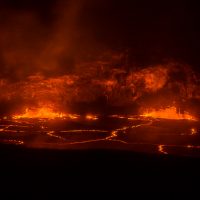
Deb and I went again the next weekend, arriving early to beat the crowds. Stunned by the numbers that arrived behind us, and were still arriving as we left well into the night. In the intermittent rain we watched the lava, often sharing my small telescope with other visitors. That night we watched as the lake overflowed, covering the 1974 lavas with a fresh layer of black.
Lava Lake at Halemaʻumaʻu from Andrew Cooper on Vimeo.
Change came again last month. After over three decades of eruptions at Puʻu Oʻo on the flank and a decade of a lava lake at Halemaʻumaʻu at the caldera, there were signs things were amiss. The 61G lava flow had become inactive. More ominously the pressure at both Puʻu oʻo and at Halemaʻumaʻu was building. The tilt-meters indicating increased inflation of the volcano, the level in the lava lake rising higher than ever before.
In all our speculation we did not expect it to be as destructive as it became. The lava broke out right in the middle of a neighborhood, taking homes and dreams in rivers of red flowing rock.
While lava flowed through the streets of Leilani Estates it drained away from Puʻu Oʻo and the lake at Halemaʻumaʻu higher on the mauna. The lake disappeared, sinking out of sight into the depths.
With that withdrawal a new hazard appeared, possible steam driven explosions as the water table was allowed to encroach into the pit beneath Halemaʻumaʻu.
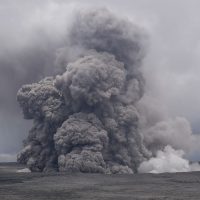
These explosions echo those of 1924, when a very similar set of events took place at Halemaʻumʻau, the lava dropping deep into the vent. Reading the records of 1924 HVO geologists warned of what would happen, a warning that proved completely accurate.
The explosions wrough other changes in the crater… Just a few days ago the plume subsided enough to get a good look at what has become of Halemaʻumaʻu. A USGS drone flew over the crater providing a clear video of the latest changes.
Much of the old floor has collapsed, along with large sections of the old rim. Occupying over half of the crater is a far deeper pit choked with vast piles of rubble.
The Halemaʻumʻau I have known for decades is completely altered. There is still a crater, it will never be the same. The latest chapter of the volcano is being written as we watch. Close watchers of the volcano wonder what will happen next.
Personally I would love to see lava reappear here. Not just because it would be cool to see and photograph an expanded lava lake. Lava returning to the summit would mean an end to the explosive eruptions showering ash and Pele’s hair across the southern sections of the islands. It would also likely mean an end of the eruptions currently flowing through homes and farms in lower Puna.
What does happen next? No way to know, this volcano is ever changing. Please stand by.

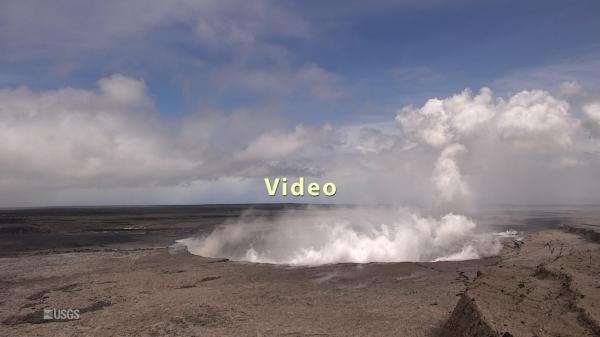

Nicely written summery. Now you have to write one about the loss of green lake and kapoho
Tidepools that disappeared this morning.
Green lake was sad, saw the lava falls going into what was once the lake this morning. The tide pools? Not doomed yet, the flow is heading straight to the bay, but the pools are off to the side a ways.
Was going to reference Twain’s chapter about crossing the chasm, but of course, you had it in the next paragraph!